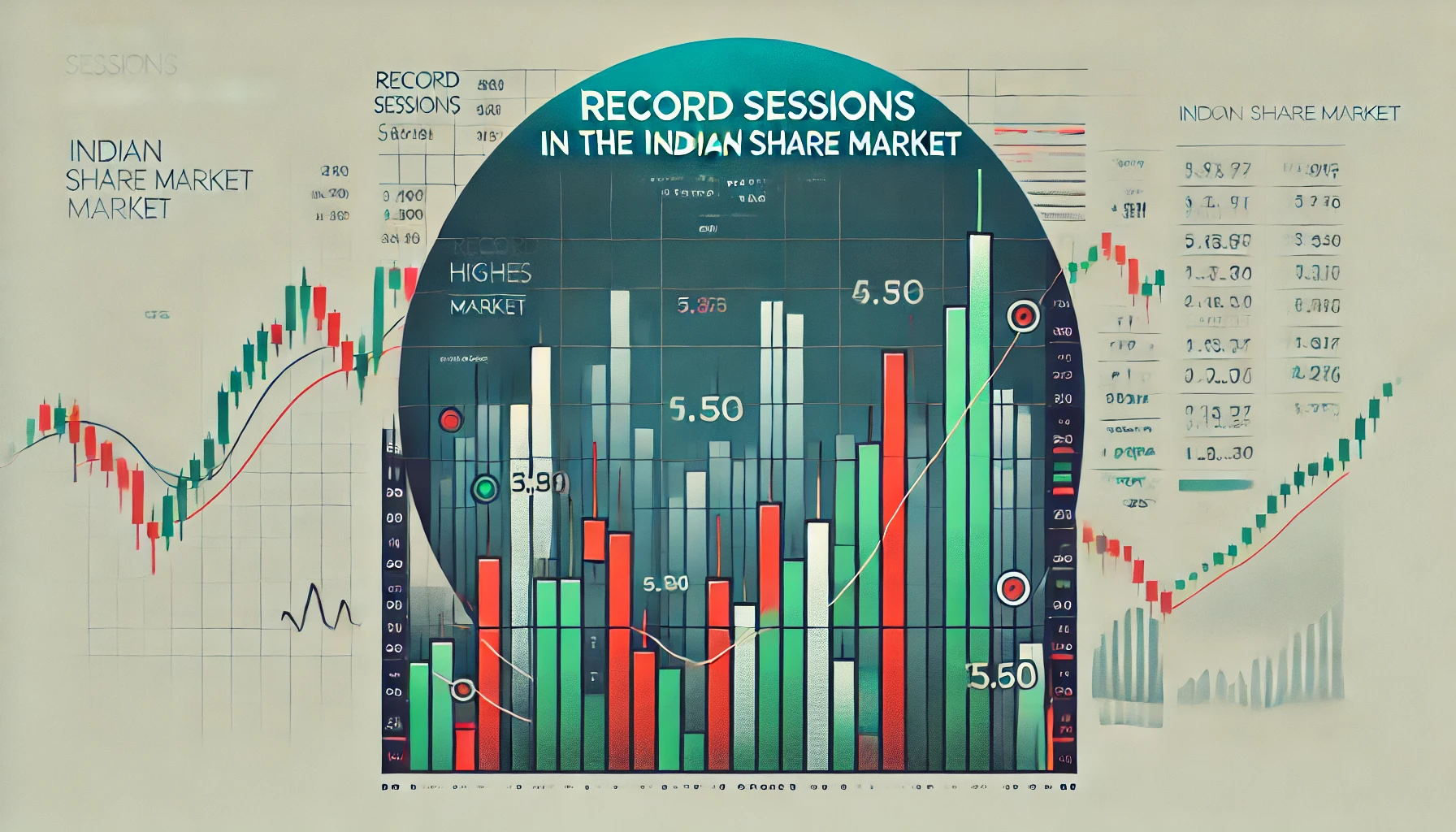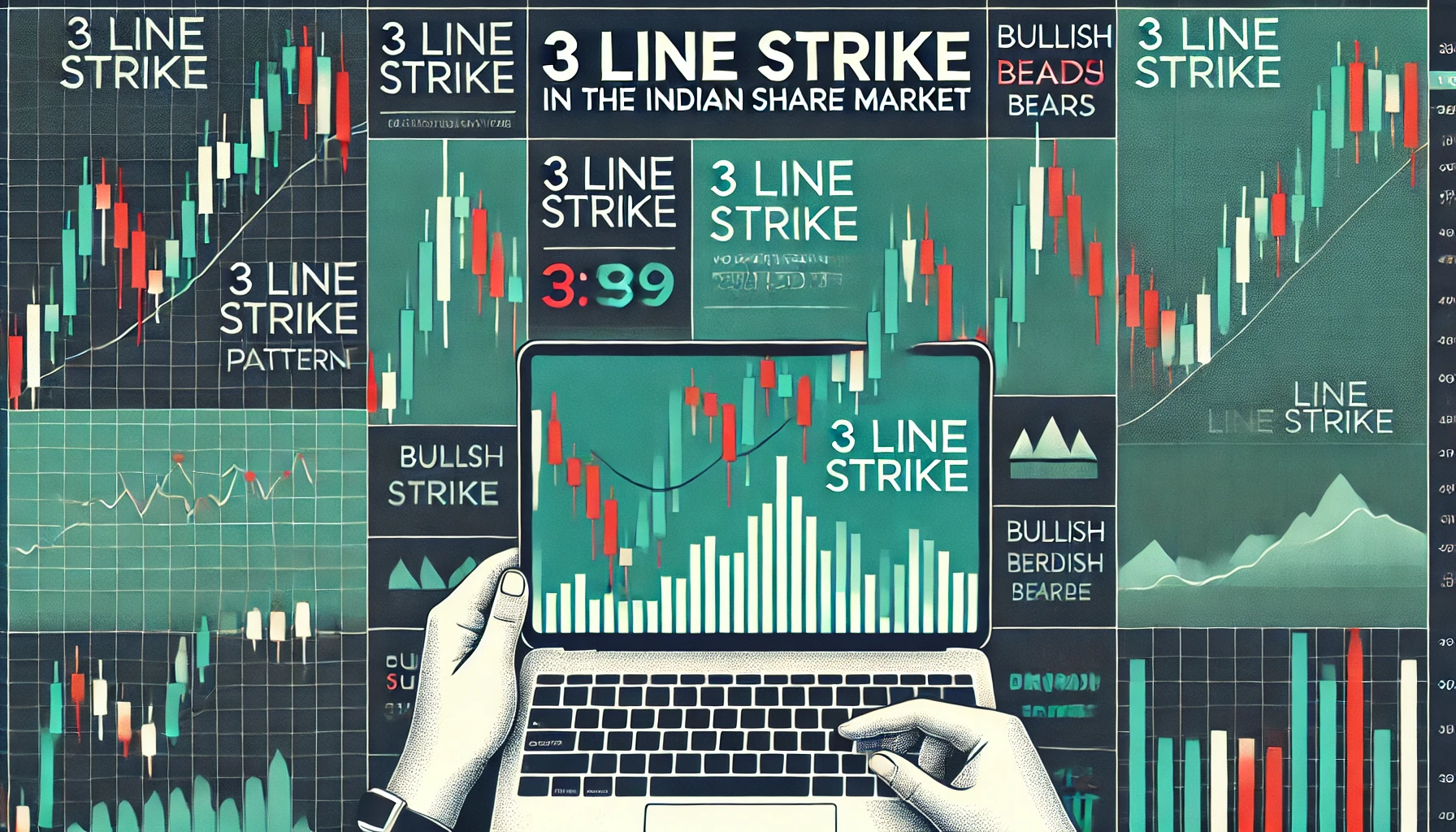The Indian share market is characterized by its volatility, presenting traders with both opportunities and risks. Understanding how to measure this volatility is crucial for making informed trading decisions, and one of the most effective tools for this purpose is the Average True Range (ATR) indicator. Developed by J. Welles Wilder, the ATR helps traders gauge market volatility by measuring the range of price movements over a specific period.
In this blog, we’ll delve deep into how ATR can be applied to the Indian stock market, provide historical data to support its effectiveness, and explore how it can be used alongside other technical indicators.
What is ATR (Average True Range)?
The ATR measures market volatility by taking into account the full price range of a stock over a specified period. Unlike other indicators that focus solely on closing prices, the ATR considers the high-low range of the day, as well as gaps from previous days, making it a more comprehensive volatility measure.
ATR is commonly used to:
- Set Stop Losses: ATR helps traders determine where to set stop-loss orders to avoid being stopped out by normal market fluctuations.
- Assess Market Conditions: High ATR values indicate increased volatility, while low values suggest reduced volatility.
- Evaluate Trade Opportunities: Traders can use ATR to choose when to enter or exit trades, depending on the volatility of the stock or index.
Formula for ATR:
The ATR is calculated as follows:
ATR=(PriorATR×(n−1)+TrueRange)/n
Where:
- n = The number of periods (commonly set to 14)
- True Range = The largest of the following:
- Current High – Current Low
- Absolute Value of Current High – Previous Close
- Absolute Value of Current Low – Previous Close
Historical Data: ATR in the Indian Share Market
To understand how ATR works in the Indian stock market, we’ll examine some historical data for prominent stocks like Reliance Industries, HDFC Bank, and the Nifty 50 index.
ATR Applied to Reliance Industries
| Date | High | Low | Close | True Range | 14-Day ATR |
|---|---|---|---|---|---|
| 01-Jan-2021 | 2,020 | 1,950 | 1,980 | 70 | 65 |
| 15-Jan-2021 | 2,100 | 2,000 | 2,050 | 100 | 75 |
| 01-Feb-2021 | 2,200 | 2,100 | 2,180 | 100 | 85 |
| 15-Feb-2021 | 2,300 | 2,180 | 2,220 | 120 | 95 |
From the data, we can see that the ATR for Reliance Industries steadily increased as the stock became more volatile in early 2021. Traders can use this information to adjust their trading strategies, setting wider stop losses to account for greater price swings.
How to Use ATR in Trading Strategies
1. Setting Stop-Loss Orders
One of the most popular uses of ATR in the Indian share market is setting stop-loss orders. By using the ATR, traders can calculate an appropriate stop-loss distance to avoid being prematurely stopped out of a trade due to normal market fluctuations.
For example, if you are trading HDFC Bank, and the current ATR is 50 points, you may decide to set your stop-loss order at 1.5 times the ATR, or 75 points away from your entry price. This ensures your trade has room to move within the typical volatility range.
2. Identifying Breakouts
ATR can also help identify potential breakouts. If a stock’s ATR value suddenly rises, it indicates that volatility is increasing, which may signal the beginning of a breakout. Conversely, a declining ATR may indicate consolidation or a lack of momentum.
3. Evaluating Market Volatility
Traders can use ATR to assess overall market conditions. During times of high volatility, such as the 2008 financial crisis or the COVID-19 pandemic in 2020, the ATR for major indices like the Nifty 50 spikes. This heightened volatility provides opportunities for day traders to capitalize on large price swings.
| Nifty 50 Index | Date | High | Low | Close | True Range | ATR (14) |
|---|---|---|---|---|---|---|
| 01-Mar-2020 | 11,500 | 10,800 | 11,000 | 700 | 550 | |
| 01-Apr-2020 | 9,200 | 8,500 | 9,000 | 700 | 630 | |
| 01-May-2020 | 10,000 | 9,100 | 9,800 | 900 | 740 | |
| 01-Jun-2020 | 10,500 | 9,900 | 10,200 | 600 | 760 |
Using ATR with Other Indicators
While ATR is effective on its own, it becomes even more powerful when used alongside other technical indicators such as the Relative Strength Index (RSI) and Moving Averages.
- ATR and RSI: RSI helps identify overbought or oversold conditions, while ATR measures volatility. When combined, traders can spot low-volatility opportunities in oversold markets, or high-volatility breakouts in overbought markets.
- ATR and Moving Averages: ATR can be used with moving averages to confirm trends. If a stock’s price is above the 200-day moving average and the ATR is rising, it may confirm a bullish trend with increased momentum.
Example: ATR with RSI for HDFC Bank
| Date | Price | ATR (14) | RSI | Interpretation |
|---|---|---|---|---|
| 01-Jan-2021 | 1,400 | 50 | 65 | Bullish Trend with High Volatility |
| 15-Jan-2021 | 1,450 | 70 | 70 | Overbought, Possible Pullback |
| 01-Feb-2021 | 1,380 | 60 | 55 | Volatility Decreasing, No Strong Trend |
| 15-Feb-2021 | 1,500 | 80 | 75 | High Volatility with Overbought Conditions |
ATR and Volatility in the Indian Share Market
One of the key benefits of using ATR is understanding market volatility. In the Indian stock market, periods of high volatility often occur during major economic events, such as budget announcements, global economic slowdowns, or elections. The ATR is especially useful in these conditions as it helps traders anticipate market movements and adjust their risk management accordingly.
Historical Volatility: ATR in the 2008 Financial Crisis
During the 2008 financial crisis, the ATR for the Nifty 50 surged as the market experienced extreme price swings. Below is a table showcasing ATR values during this period:
| Date | Nifty 50 | True Range | ATR (14) |
|---|---|---|---|
| 01-Jan-2008 | 6,000 | 700 | 450 |
| 01-Feb-2008 | 5,500 | 800 | 500 |
| 01-Mar-2008 | 4,800 | 1,000 | 700 |
| 01-Apr-2008 | 4,000 | 1,200 | 850 |
As the table shows, the ATR shot up during the market’s sharp declines, giving traders an early warning of heightened volatility. Traders who used ATR during this period were able to adjust their stop-loss orders to accommodate the increased market risk.
Advantages and Limitations of ATR
Advantages:
- Universal Applicability: ATR can be applied to any market, making it ideal for use in the Indian stock market.
- Adaptable to All Timeframes: Whether you’re a day trader or a long-term investor, ATR can be used across different timeframes.
- Volatility Indicator: ATR offers a clear picture of market volatility, helping traders make informed decisions.
Limitations:
- Does Not Provide Trend Direction: While ATR measures volatility, it does not indicate whether the price is moving upward or downward.
- Lagging Indicator: ATR is a lagging indicator and may not provide timely signals during rapid market changes.
Conclusion: Mastering ATR for Successful Trading in Indian Markets
The ATR (Average True Range) is a vital tool for traders and investors navigating the volatility of the Indian share market. It not only helps in setting appropriate stop-loss levels but also aids in identifying potential breakouts and consolidations. By combining ATR with other technical indicators, traders can develop robust trading strategies tailored to market conditions.
Understanding and mastering the ATR can enhance your ability to manage risk, capitalize on market opportunities, and improve your overall trading performance. Whether you are trading high-volatility stocks like Reliance Industries or analyzing the Nifty 50 index, ATR offers valuable insights into market movements.
Incorporating ATR into your trading toolkit can provide you with an edge in the ever-evolving Indian share market.

What is the TRIN stock market indicator?
The TRIN (Trading Index), also referred to as the Arms Index, is a technical analysis …

Record Sessions
The Indian share market is a dynamic and volatile space where major highs and lows …

3 Line Strike
Candlestick patterns are a vital tool for traders in the stock market, offering insights into …

3 White Soldiers and 3 Black Crows
Candlestick patterns are a key element of technical analysis in stock trading, offering clear signals …

Gapping Doji
Candlestick patterns are a critical part of technical analysis in the stock market, providing traders …

3 Windows
Candlestick patterns are a vital part of technical analysis, offering traders and investors insights into …

2 Gapping Candles
In the fast-paced world of the Indian stock market, technical analysis plays a crucial role …

3 Inside Down and Up
Candlestick patterns are powerful tools in the world of technical analysis, offering traders insight into …

Bullish and Bearish Belt Hold
Technical analysis is an essential part of trading in the Indian share market. Candlestick patterns, …

Piercing and Dark Cloud Cover
In the ever-evolving Indian stock market, candlestick patterns are crucial for traders aiming to predict …

Double Doji
Candlestick patterns have long been a favored tool for technical traders to forecast market movements. …

Rising and Falling Windows
In the world of technical analysis, candlestick patterns are vital tools for traders to anticipate …

Tweezer Top and Bottom
In the fast-paced world of the Indian share market, traders use technical analysis tools to …

Morning Star and Evening Star
In the Indian share market, technical analysis is a valuable tool for traders aiming to …

Hammer and Hanging Man
The Indian stock market offers a wealth of opportunities for traders who understand technical analysis. …

Shooting Star and Inverted Hammer
The Indian stock market, with its dynamic nature, presents various opportunities for traders and investors. …

Last Engulfing
The Indian share market is filled with patterns that can help traders make informed decisions. …

Harami
In the world of stock market analysis, candlestick patterns offer valuable insights into price movements. …

Engulfing
The Indian share market is known for its volatility, and traders often rely on technical …

Marubozu
Candlestick patterns are powerful tools used by traders in the Indian share market to analyze …

Spinning Top
The Indian share market, like any other, experiences constant fluctuations due to a multitude of …

Doji
The Indian share market is dynamic, with investors using various tools to gauge stock performance. …

Double Top
In the world of technical analysis, chart patterns are valuable tools that help traders spot …

Tweezer
In the Indian share market, where volatility and price fluctuations are part of daily trading, …

Harami
In the world of technical analysis, candlestick patterns are powerful tools that help traders make …

Heiken-Ashi
Navigating the Indian share market can be challenging due to the inherent volatility and market …

Ichimoku
In the world of technical analysis, few indicators offer the comprehensive insights that the Ichimoku …

Value Charts
In the ever-changing landscape of the Indian share market, traders and investors need tools that …

Money Flow Index
In the Indian share market, identifying trends, understanding momentum, and assessing volume are critical components …

Aroon
In the fast-paced world of the Indian share market, identifying market trends and spotting reversals …

Gator Indicator
In the Indian share market, success is largely dependent on identifying the right trends and …



















